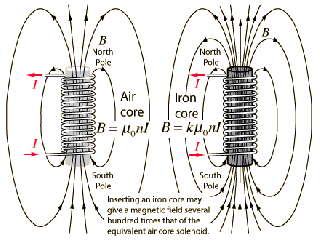Dancing David
Penultimate Amazing
Maybe, how can you tell the difference? What predictions doe sit make that is not part of tehs tandar model?The broad claim is that flux tubes carry an electrical current that does work.
Maybe its heating the planets, maybe its powering the aurora.
That is one for the boffos (I mean that is the best way.)The hypothesis is that the gyroradius of the electron is responsible for the central parallel magnetic vector component of flux tubes where plasma conditions are such that the gyroradius is large enough. Otherwise a flux tube carrying current has a helical perpendicular component that dominates.
As a layman i will ask again, what can you observe in any number of flux tubes that would demonstrate that your model makes a difference?
Implication and opinion.In the abstract below they imply from data that flux tubes carry an electrical current.
Paul Bellan says that for the collimation of plasma to occur in the structures that are observed, an electrical current is required.
Observation, predictions and data, what about the many flux tubes we can observe. What difference would it make?
Okay, I know enough to answer that one, no.Thats it. Thats all I'm saying. No mystery. A traditional electrical current is at work.
And then taking the idea of a current carrying flux tube, equating that to a wire and saying " how would a wire act" in a what is termed a reconnection.
The 'lines' are not wires they abtract representation of the variance in magnetic field stregth.
Straw man.
You again are being sophmoric and pretending that one model is more real than another.
Whic is why i ask, what data can you show that your model makes a difference in?
Please?
Otherwise it is semantics between two equivalent sets.
Except for when it doesn't many plasmas do not have current flow in the traditional sense.This is modeled using the right hand rule. Its relatively simple to figure out what the magnetic field is doing based on current flow in 2 wires as they are physically moved them around.
That is the model of what is termed a reconnection that is being advanced.
The magnetic field "follows" the current. It lags slightly behind the current in manifestation of effects. The current causes the magnetic field.
And you still have not said how this explains any astro physical data?For induction to be a viable mechanism(of tube creation) it must take place at all points along the flux tube. Otherwise the flux tube still a current carrier which is the original claim.
"Field-aligned currents associated with flux transfer
events deduced from Cluster magnetic field and particle data"
A. Marchaudon (1), J.-M. Bosqued (2), J.-C. Cerisier (3), A. N. Fazakerley (1), A. Balogh (4), and H. Rème (2) (1) Mullard Space Science Laboratory, UCL, Dorking, UK, (2) Centre d’Etude Spatiale des Rayonnements, Toulouse, France, (3) Centre d’Etude des Environnements Terrestre et Planétaires, Saint-Maur-des-Fossés, France, (4) Imperial College, London, UK
(am@mssl.ucl.ac.uk / Fax: +44 1 483 278312 / Phone: +44 1 483 204293)
The Cluster multi-spacecraft mission allows studying the fine structure of polar cusp injection events due to transient reconnection, the so-called Flux Transfer Events (FTE). In particular, it is possible to study the electric currents flowing along the reconnected flux tubes from the measurement of particles and magnetic field by the PEACE, CIS and FGM experiments onboard the Cluster spacecraft.
During mid-altitude cusp crossings (2001-2002 seasons), the Cluster spacecraft are in a “string-of-pearl configuration”. Field-aligned currents (FAC) associated with injections are calculated independently from magnetic and particle data. From the particle data, the field aligned currents are obtained as the sum of the ion and the electron parallel currents. The Cluster spacecraft configuration does not allow us to derive FACs from magnetic data by the curlometer method. However FACs can be calculated by
a single-spacecraft method for each Cluster spacecraft. At mid-altitude (3-7 RE), because the drift velocity of the current sheets can be of the order or larger than the spacecraft velocity (Lockwood et al., 2001), this drift velocity must be taken into account when deriving FACs from the magnetic data by the single-spacecraft method.
We describe and discuss the methods used to determine the FACs from the particle and magnetic field data. By fitting the field-aligned currents deduced from magnetic and particle data, we determine the drift velocity of the current sheets and we compare it with the drift velocity deduced from the multi-point measurements of Cluster. Finally, we check the agreement of these results with electrodynamic models reconnected flux tubes and we discuss the particle populations carrying the FACs in the cusp.
http://www.cosis.net/abstracts/IAGA2005/00913/IAGA2005-A-00913.pdf
Thanks for the answer although you haven't really said what makes this different from the other model.
Both models transform into each other. How do you show that there is a current in all flux tubes?
I missed that part.
(Slow me)
Thanks for your time and patience.


